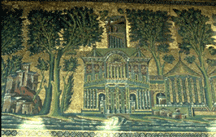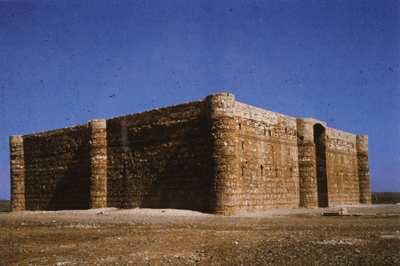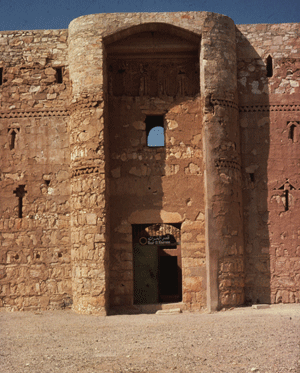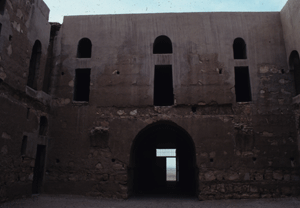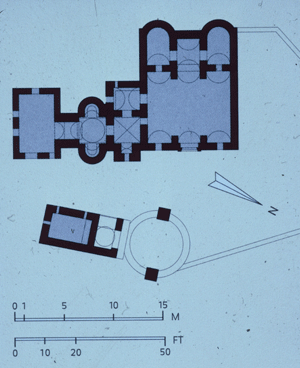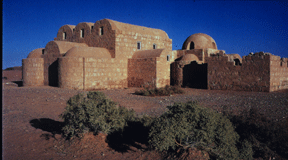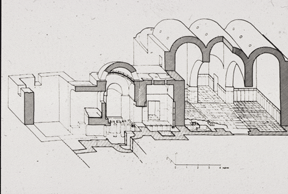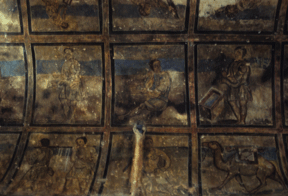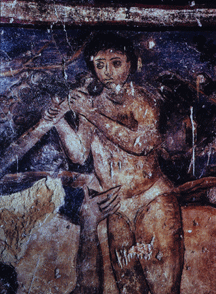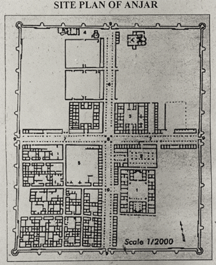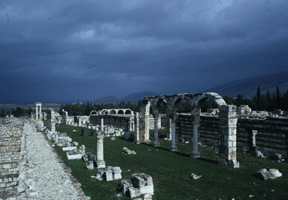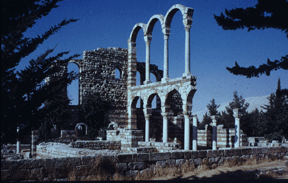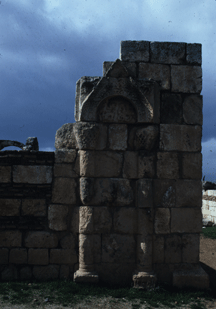AGA KHAN PROGRAM FOR ISLAMIC ARCHITECTURE
Course 4.611/4.613:
3- Early Umayyad Architecture: (Click on images to enlarge)
The Great Umayyad Mosque in Damascus (ca. 706-15): Built on order of the caliph al-Walid I (705-15), the son of 'Abd al-Malik.
Mosaics of the Great Mosque: Representations of ideal-types residences.
The Barada Sequence: villas, excedrae (or porticoes), tholoi, bridges over rivers.
"The Barada Scene" mosaic panel at the Umayyad Mosque of Damascus |
Umayyad Desert Palaces, Architecture and Decoration: How can we explain them? The new economic, geographic and social orders:
- Villa Rustica: Pleasure and hunting (the notion of the Hayr, the game park).
- Estates in agricultural development projects.
- Fortified small towns.
The Palaces of al-Walid I (705-15):
Qasr Kharana, Jordan (ca. 705-10):
- Small fortified square enclosure with arrow slits and round corner towers
- Single monumental gate with a shallow arch
- Rough stone and brick construction
- Different vaulting techniques
- Mosaic floors
General view of the Qasr Kharana |
Gate of the Qasr Kharana |
The Courtyard of the Qasr Kharana |
Qusayr ‘Amra, Jordan (between 711 and 715):
- Part of a larger complex being excavated
- Small hall with a magnificent bath
- Complex vaulting systems, with the appearance of the first pointed arches
- Hypocausts under the floor for hot air in the bath
- Famous fresco murals, and dome's zodiac representation
Plan of Qusayr 'Amra |
Back view of Qusayr 'Amra |
Section in palace showing the hypocausts under the floor |
Frescos of the left vault showing craftsmen |
Detail of a fresco
|
The Town of ‘Anjar, Lebanon (714-15):
- Large enclosure (1100 ft. to the side) with half-round towers and round corner towers
- Cross-axial colonnaded, commercial streets dividing the enclosure into four quarters
- Two palaces, a bath, and one mosque excavated
Site Plan of Anjar |
General view of the central axis
|
Remains of the Palace of Anjar |
Mihrab |
The Architectural Characteristics of Umayyad Palaces:
- Square enclosure (castrum type) with four round towers in the corners
- Monumental portals
- Two-storied, porticoed courtyard structure
- Bayt Type units
- Confluence of Byzantine and Sasanian construction details and decorative techniques
- Figural representations of rulers, courtiers and court scenes (music, dance, drinking, hunting): The survival of pre-Islamic images of the ruler.
